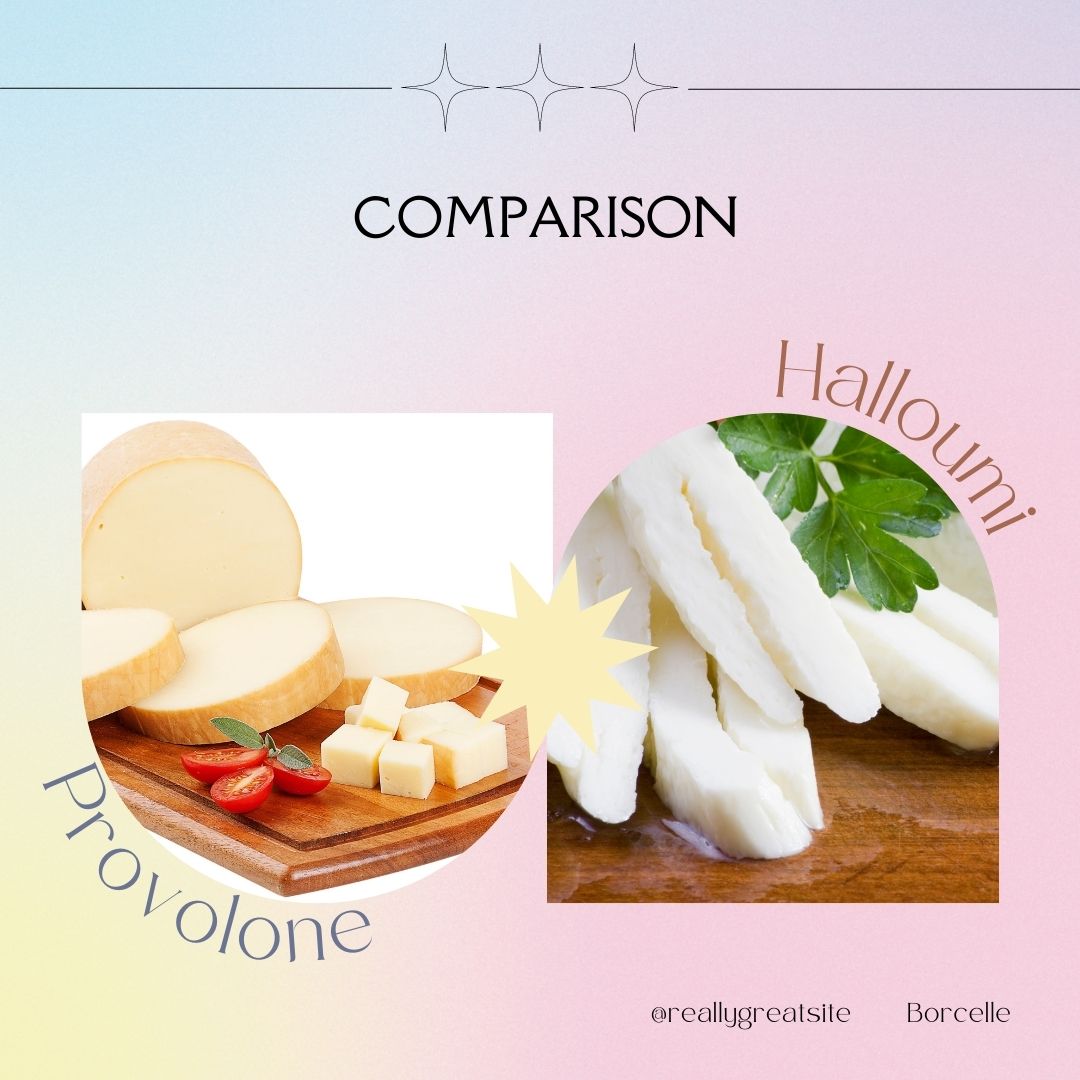Last Updated on January 17, 2024 by Aaron
Halloumi and provolone cheese are both delicious, but they’re very different. Halloumi is a type of white cheese that comes from Cyprus, where it’s been made for centuries (2). Provolone is an Italian cheese that was appeared in the early 1900s (1).
In this blog post, we will compare two popular types of cheese: provolone and halloumi. Are they the same? What are the differences? Let’s find out!
Table of Contents
Characteristic
First off, halloumi has a mild feta-like flavor which makes it perfect for grilling or frying while provolone tastes saltier and sharper. Their textures are also quite different – halloumi is “squeaky”, chewy, and rubbery. While provolone is smooth and creamy.
One thing that stands out is halloumi doesn’t melt, we’ll talk about this in the production below. Thus, it’s often used in popular Greek cuisine as an appetizer known as saganaki – a fried cheese. On the other hand, provolone melts well on sandwiches, pizzas, and other Italian dishes.
Type and Age
Halloumi is a white unripened cheese that has a slightly yellow tinge to it depending on the milk source used. The traditional halloumi uses sheep and goat milk, some other varieties use cow’s milk. Also, there is a lightly aged version of halloumi for a couple of months. It’s drier with a stronger flavor.
Whereas provolone is made from cow milk. It’s off-white in color. Provolone tends to be aged for much longer than halloumi, that’s 4-12 months usually, or go longer for a sharper taste. This gives the provolone its characteristic sharp taste and grainy texture.
Production
Halloumi is made from milk, salt, and rennet. And the production process is fairly simple. First, the milk is heated and rennet is added to help curdle the milk. The whey is then drained and curds are pressed. The curds are cooked to a near-boiling (194 F) temperature (4). Lastly, the curds are salted and garnished with mint leaves. The aged version is whey-brined for around 1-2 months.
The provolone cheese production is somewhat similar. However during the milk curdling step, in addition to rennet, bacteria cultures (starter) are also added. It’s to develop the signature sharp taste when aging later. The provolone curds also go through a technique called pasta filata where the curds are kneaded in hot water treatment.
- No bacteria starter cultures used in the production of halloumi
- Provolone goes through pasta filata (stretched-curd) whereas halloumi didn’t. However, halloumi curds are cooked.
- Halloumi barely aged while provolone aged for a minimum of 4 months.
The meltability of halloumi is poor. Particularly due to the cooking process caused the curds to come together instead of spreading out – like an egg being porched in boiling water (5).
Serve and Use
Halloumi is a perfect appetizer for your next party – it’s easy to prepare and everyone will love its unique flavor. Grilled halloumi goes great with salads or on skewers. You can also fry it up in some oil for a quick snack.
Provolone is most commonly used in Italian dishes. It melts well and pairs perfectly with pasta dishes or pizza.
Substitute Halloumi for Provolone
Yes, you can substitute halloumi for provolone in recipes. However, keep in mind that the flavor and texture will be different, and provolone tends to melt better. You can try to use young provolone dolce as a substitute, which is a milder and creamier version of provolone, for a similar flavor.
Reference:

